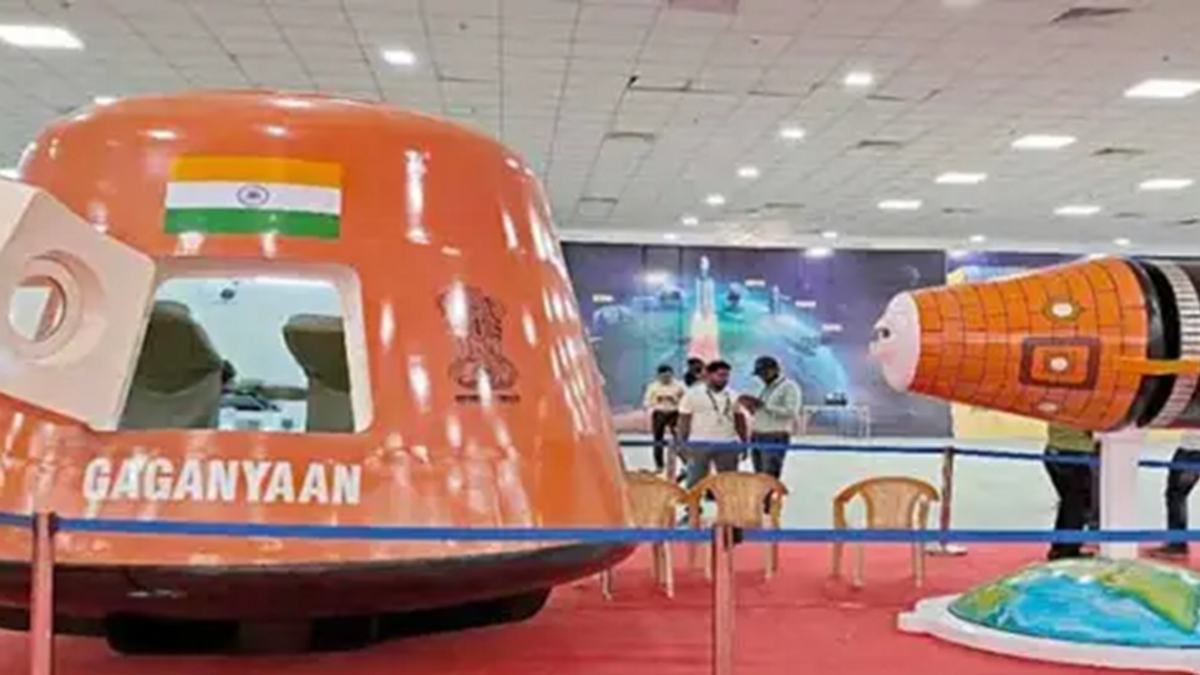
Gaganyaan: Mixed Views to ISRO’s Approach
(Note: The author is a renowned Aerospace scientist having authored the book “Design Concepts in Human Space Missions”. The views mentioned in this article are personal.)
Indian Space Technological prowess expressed through Indian Space Research Organisation (ISRO) is undisputed, duly shown in its numerous ventures. It was very just for it to expand into Human presence in Space. It has a robust propulsion system (rocket) that had to be tested for human rating. ISRO also had the crew module structure that was put in orbit, manoeuvred to deorbit and controlled re-entry to atmosphere for precise point splash in the ocean. The module repeatedly withstood the stress of atmospheric re-entry as well as splash in the ocean followed by its prompt recovery by Indian Navy. Institute of Aerospace Medicine (IAM), Bangalore has been geared up for astronaut selection since 1983 when Sqn Ldr Rakesh Sharma and Wg Cdr Ravish Malhotra were screened. Some works were still left in the Design & Development (D&D) of the very complex and fully automated Environmental Control & Life Support System (EC&LSS) for the Crew Space Module, the astronaut stations with flight monitoring and Control, the Space Suit and some other allied provisions. The Indian Human Space Mission was very much on the card for a long.
Indian HSM “Gaganyaan” is surely a praiseworthy step, a showcase project of ISRO. Important works completed on the HSM included prototype Space-Capsule Recovery Experiment (SRE) launched using PSLV-C7 rocket in 2007 and Crew Module Atmospheric Re-entry Experiment (CARE) undertaken in Dec 2014. Taking advantage of the ever willing Modi Govt on S&T projects, ISRO chairman seemed to have gone to the PMO possibly unprepared for approval of the HSM. PM Modi announced on 15 Jan 2018 the “launch of ‘Gaganyaan’ by 2022 when India is to celebrate 75th independence day; or even before that”. It is highly unlikely that ISRO would not have known of the various intricacies involved in the development of the remaining D&D works mentioned above.
After announcement by the PM, ISRO’ seemed to have been rattled, signing various MoUs and running for shopping. What they had planned about the EC&LSS for the Crew Space Module, is not known. Highly professional scientists in DRDO were capable of D&D of the EC&LSS but denied the opportunity. Similarly, specialists at IAM had the core competence in the selection and indoctrination training for the space crew. Yet, against all these expectations, ISRO signed various MoUs with Russia and France for the vital systems, aircrew training and even health monitoring while in orbit. It was a very depressing news for some of the Indian Scientists and professionals to be denied of the pride of developing indigenous systems and techniques. All these were possibly done under the time pressure to meet the launch deadline by 15 Aug 2022. Clearly, the actions of ISRO seemed jittery, more so for meeting deadlines. In turn, push for indigenous technologies and approaches got left behind. Never mind, there could be Indian technological pushes during ‘Gganyaan-2 or beyond’.
As mentioned, DRDO was denied D&D of the EC & LSS. They have been given lollipops to avoid crying, wherein DEBEL’s Space Vest for acquiring body parameters and packed food from DFRL were requisitioned. IAM, IAF was made to play embarrassing second fiddle to the Russians when the highly professional body was asked to submit the list of the probable selectees for Russian for their final approval? Well-disciplined Aerospace Medicine Specialists of IAF will never air their grievances held at the core of their hearts. The author was instrumental in setting up the Dept of Space Medicine at IAM way back in 2007 when the draft protocols for selection and training including the microgravity simulation under parabolic flight were worked out. Further refinements in the schedules must have been included in the intervening years. Yet, ISRO chose to engage Russia for astronaut training. ISRO/Govt of India also missed out at setting up the “Space Certification Agency” involving CEMILAC/DGCA that could have become fully operational in the coming years. All these could have been great initiatives but the opportunity lost. All these are considered regressive steps for indigenous technologies and efforts. This also raises some eyebrows if the Core Group of National Advisory Council for mission Gaganyaan is on the right track. There seems to be lot more grey areas in the mission Gaganyaan planning than is visible to the most of us.
Year 2019 was a memorable year for ISRO with the successes of numerous satellite launches through different types of launch vehicles. Equally laudable was its success of placing the different satellites in different orbits in a single launch. However, HSM was a totally different cup of tea. Having already tested the launch, orbital insertion, deorbiting, re-entry, splash and recovery of the Crew Module for HSM in 2007 and 2014, ISRO possibly underestimated the intricacies involved with the remaining few technologies and processes. Of course, Covid pandemics of near 2 years and failure of GSLV-F-10 mission in Dec 2021 must have significantly impacted the Gaganyaan schedules, the latter more than the former. It is only hoped that the problems in GSLV has rectified beyond doubt as human lives will be at stake.
It was pertinent on part of ISRO to have approached DRDO, IAM, CEMILAC/DGCA for the Technology Demonstration of the remaining equipment, technologies and procedures. Fund allocation was a secondary issue whether from ISRO or DRDO. But this did not happen. Gaganyaan was a perfect stepping stone for the indigenous Institutions of Excellence to Design, Develop, test, certify and execute our own plans and thoughts in accomplishing the HSM. An indigenous effort to a short duration mission, with no Extra-Vehicular Activities (EVA) involved where almost the entire activities of launch, orbital insertion, de-orbiting, re-entry and splash in sea… are all automated or remotely controlled with only limited override functions with the astronauts/crews, could have been a perfect beginner for our scientists and professionals.
IAM, IAF is also capable of telemetric instrumentation and psychophysiological monitoring of the astronauts but this responsibility too has been given to CNES France and EAC of Germany. With so much of the involvement of the Specialists in Aerospace medicine at every stages of selection, training, inputs on D&D & Certification and inflight telemetric monitoring, it will be extremely useful to include Commandant/Chief Research Officer of IAM in the Core Group of National Advisory Council of the project. Training of the crew for flight operation and override safety functions is rightly been done by ISRO.
Notwithstanding the above and criticisms apart (which is only for the reasons of enabling indigenous technologies in national interest), we all sincerely hope and pray that the first Human Space Mission succeeds. It must have been a Herculean task for ISRO to coordinate with 500-odd Indian industries, academia and others in realising the HSM program. Round-the-clock mission tracking ground stations too have been set-up / tied-up globally at suitable locations. All activities seem to be falling in place for final launch in 2024 as announced by Dr Jitendra Singh on 13 Sep 2022. Human rating of the launch vehicle is nearing completion and an unmanned mission with instrumented dummies could be launched soon this year.
The stage is nearly set for realising ‘Gaganyaan’ mission. Although the launch was not possible before 75th Independence Day, corners must not be cut that may jeopardise safety of operations. As far as realising fully indigenous technologies are concerned, there will surely be Gaganyaan 2, 3, 4 and more. It can be hoped that ISRO & PMO shows confidence in our own scientists and professionals to undertake the subsequent ventures with indigenous technologies and equipment and starts working from now on... not at the last moment. If ISRO opts for it, PMO will be all willing to enable our scientists do it here, by own hands and for our pride. Remember the Chinese did not have to import their Technologies or train their cosmonauts abroad in their HSM.

